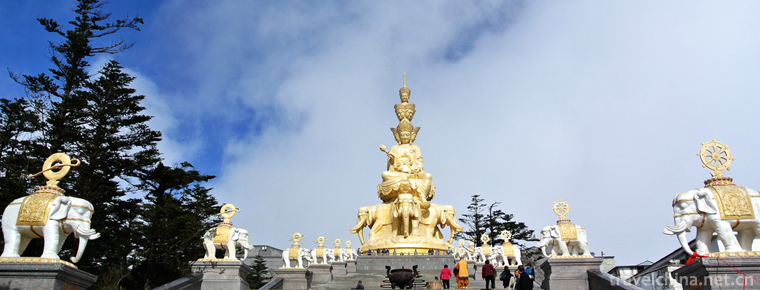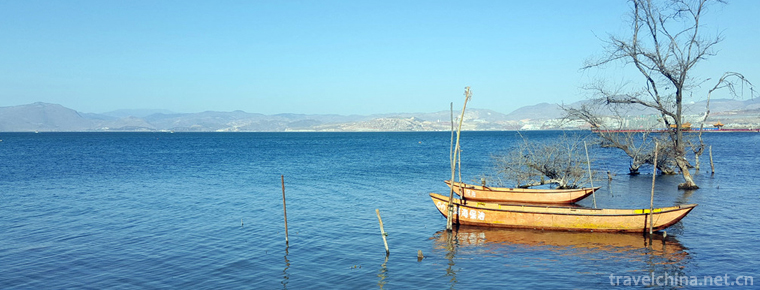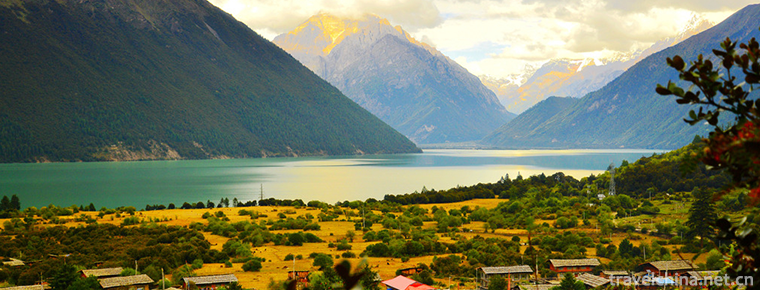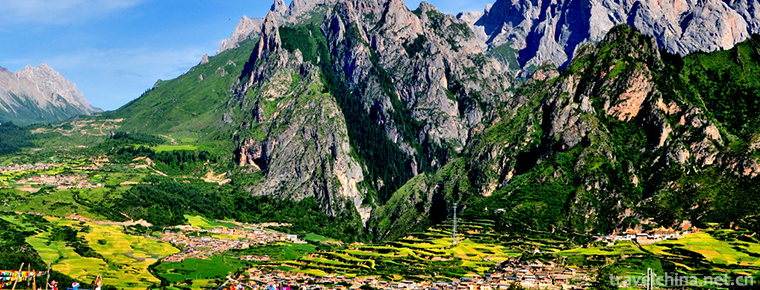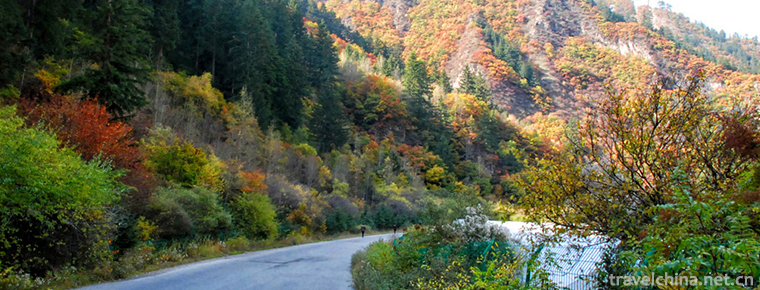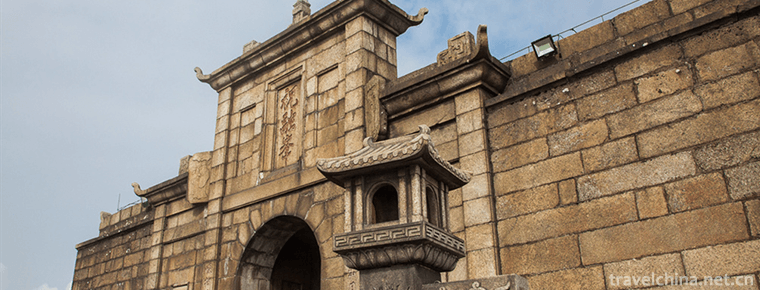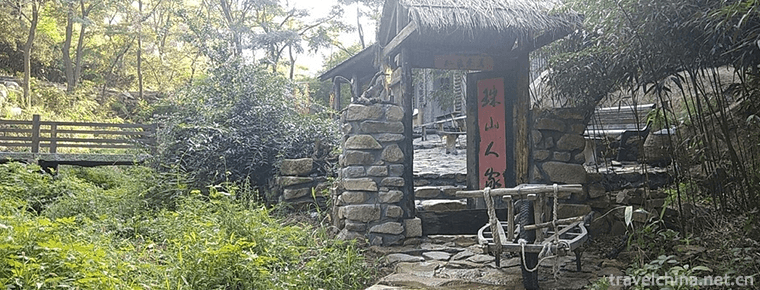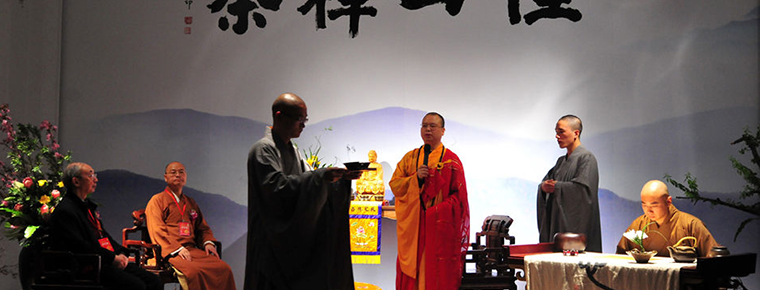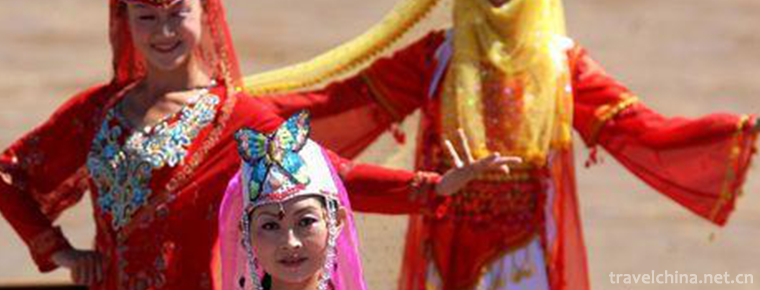Qianfoya Scenic Spot
Guangyuan Qianfoya is the largest grotto group in Sichuan Province. The statues of cliffs began in the Northern Wei Dynasty. After nearly 1500 years, the cliffs, which are 45 meters high and 200 meters long in the north and south, are covered with statue niches, overlapping 13 layers and dense as beehives. Only when the Sichuan-Shaanxi Highway was built in 1935, more than half of the statues were destroyed. Today, the only remaining niches have more than 400 statues with more than 7000 bodies. Thousand Buddha cliffs are built along the river, which is quite spectacular. The Sichuan-Shaanxi Road passes beneath them, forming an organic unity of rivers, roads, mountains and Buddhas.
geographical position
Guangyuan Qianfoya is situated on the East Bank of Jialing River, 5 kilometers north of Guangyuan City. The dangerous Pavilion of ancient trestle road, Shicuige Pavilion, is located at the south end of the cliff. Qianfoya is the largest grotto group in Sichuan. In April 1961, it was listed by the State Council as the first batch of national key cultural relics protection units.
Historical culture
edit
The statue of Qianfoya Cliff began in the Northern Wei Dynasty. It has lasted nearly 1500 years. On the cliff, which is 45 meters high and 200 meters long in the north and south, it is covered with statue niches, overlapping 13 layers, dense as beehives. According to the inscription of Xianfeng 4 years (1854) in Qing Dynasty, the statue of the whole cliff reached "17,000 wonders". Unfortunately, when the Sichuan-Shanxi Highway was built in 1935, more than half of the statues were destroyed. There are only more than 400 statues and more than 7000 statues in the Gongcaves. The whole cliff statue is centered on the Dayun Cave and divided into two sections, north and south.
Main attractions
The statue of Qianfoya Cliff began in the Northern Wei Dynasty. It has lasted nearly 1500 years. On the cliff, which is 45 meters high and 200 meters long in the north and south, it is covered with statue niches, overlapping 13 layers, dense as beehives.
The whole cliff statue is centered on the Dayun Cave and divided into two sections, north and south. The southern section of the niche grottoes are as follows: the Great Buddha Cave, lotus flower cave, Munici Pavilion, Thousand Buddha Cave, Buddha Cave, Sleeping Buddhist nicniche, multi-treasure Buddha niche, receiving Buddhist niche, providing niche, Shenlong Buddha, Ruyilun Guanyin, single Buddha Cave and so on; the northern section of the niche grottoes are as follows: Buddha niche for the third generation, worry-free flower grotto, worry-free flower grotto, Mailer Buddhnicniche, three-body Buddha niche, three-body BuddhBuddha niche, Festival monk niche, monk niche, Buddhist niche, Buddhist niche, sleeping niche, Buddhist niche, statue grotto, TiTiGrottoes, King's niches in Tibet, Lishi niches, Luxena Buddhist niches Eleven-sided Avalokitesvara, Amitabha Buddhist niches, Feitian Grottoes, Tibetan Buddhist Caves in the Qing Dynasty, etc. Dayun Cave is located in the center of Qianfoya Cliff. It has 234 statues. There are 148 Lotus Guanyin statues on the left and right sides of the cave. The main Buddha statue in the middle of the cave is Maitreya Buddha. It is said that the Maitreya Buddha is the incarnation of Wu Zetian.
Background story
In the first year of Tang Tianzhu (690), when Wu Zetian was officially crowned, 12 monks, such as Faming Buddhist monk Xue Huaiyi of Baima Temple, wrote Dayun Jing to meet the needs of Emperor Wu Zetian. In Dayun Jing, Wu Zetian was born of Maitreya Buddha and should replace Li Tang as emperor. Wu Zetian was very happy when he saw the empress. He wrote a preface and promulgated it in the world. He ordered all States to Yingzhou. The local people built a cloud cave on the Qianfo Cliff. He carved the statue of Maitreya Buddha and the two saints in the back niche, Gaozong Li Zhi and Wu Zetian. According to Chinese tradition, men should be left and women should be right, and the ranking of the two saints is women left and men right, and the niches are higher than men and lower than women, which reflects the ingenious idea of the designer. Guangyuan Municipal Cultural Relics Management Institute has built and perfected the cliff Pavilion walkway, with staircase climbing, which can reach the niches for visits.
Tourist guide
Best travel time
Qianfoya is a subtropical humid monsoon climate. The climate is mild, the light is suitable, the four seasons are distinct, and the continental monsoon is obvious. The average temperature is about 15.4 C. It is suitable for tourism all year round. Among them, March-October is the best season for tourism.
Free ticket policy
Children under 1.1 meters are free of charge; elderly people over 70 years old hold old age or identity cards, active servicemen hold officer's cards, disabled persons hold disability certificates free of tickets.
Favoured policy
Old people aged 60 to 69 buy preferential tickets for scenic spots with old age card or ID card (the above preferential policies need to be purchased by themselves in scenic spots)
1. Opening time: 9:00-17:30; [Please Book 3 hours in advance before you can enter the park]
2. Ticket Collection Place: Ticket Office of Qianfoya Scenic Area;
3. Ticket Collection: After successful booking, you will receive short messages from mother donkey's mobile phone and two-dimensional code messages from scenic spots. Please send two-dimensional code messages to the scenic spot ticket office for admission formalities.
4. Scenic Area Address: 5 km north of Guangyuan City, Sichuan Province, East Bank of Jialing River;
5. Special reminder: The scenic spot uses two-dimensional code to exchange tickets, which is valid for one month from the date of purchase.
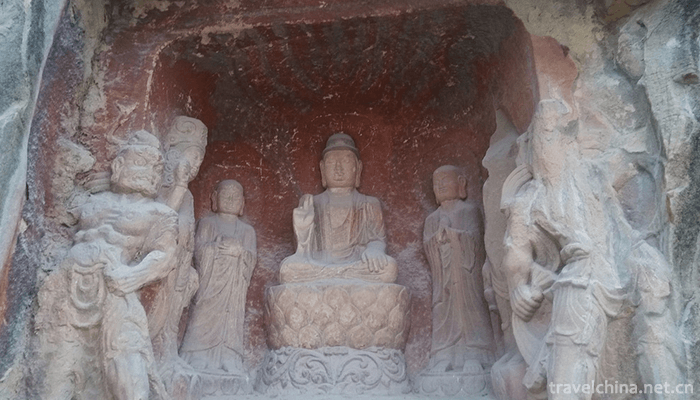
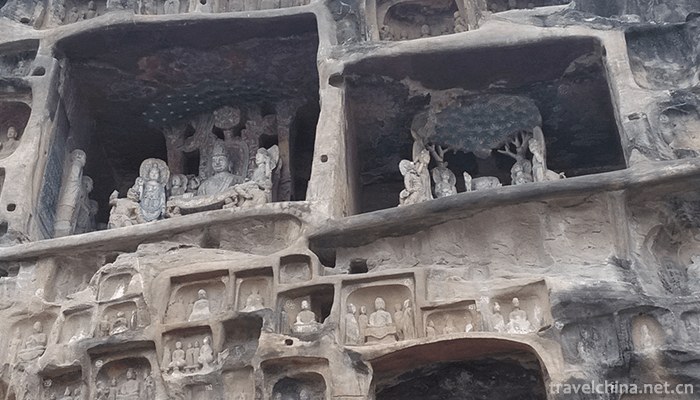
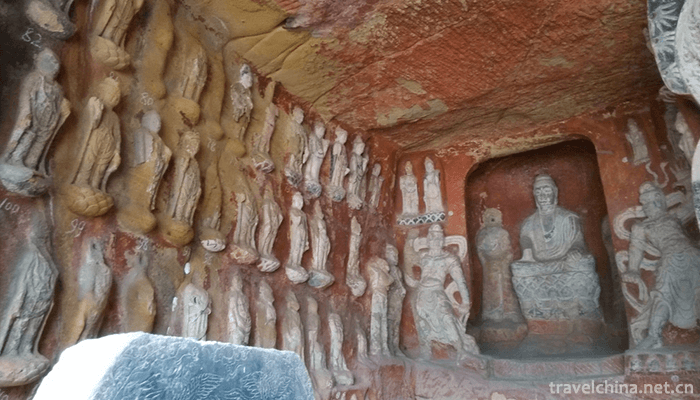
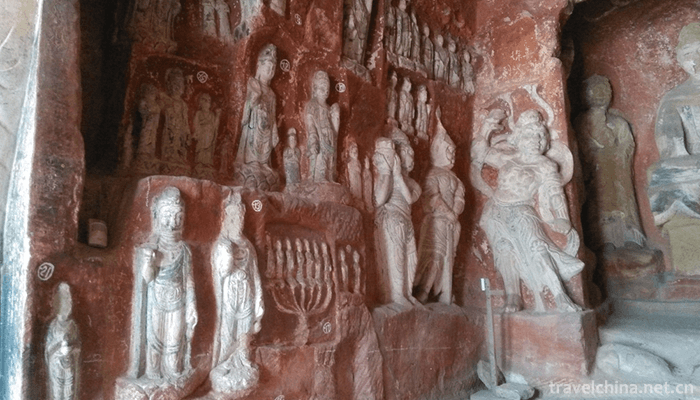

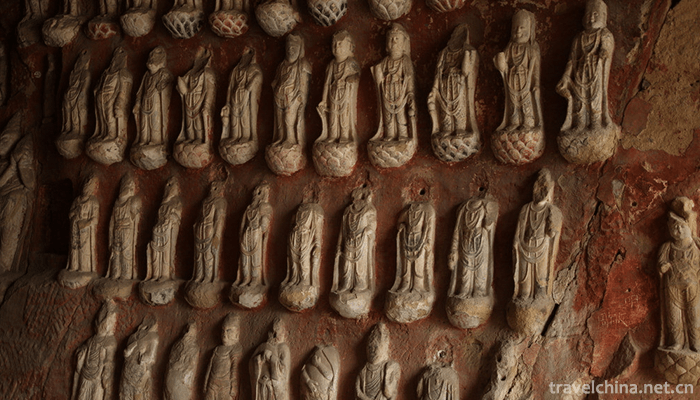
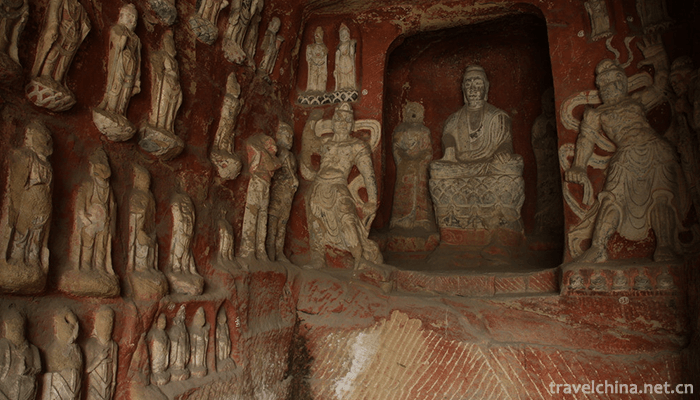
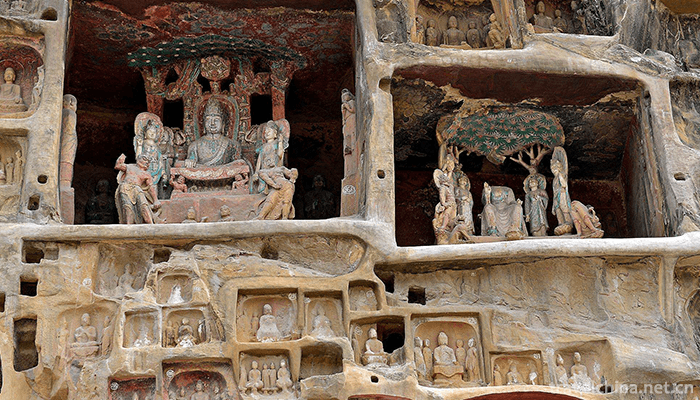
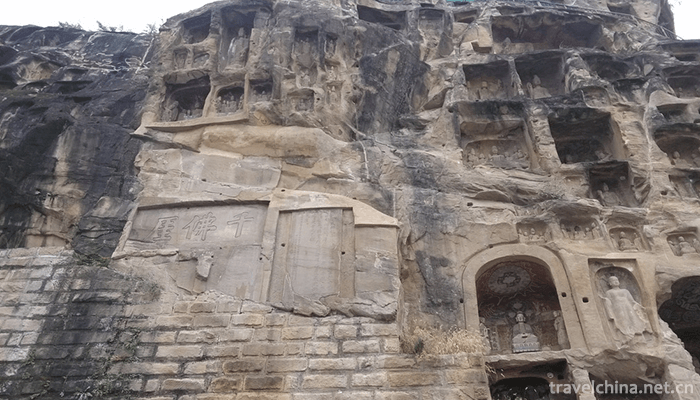
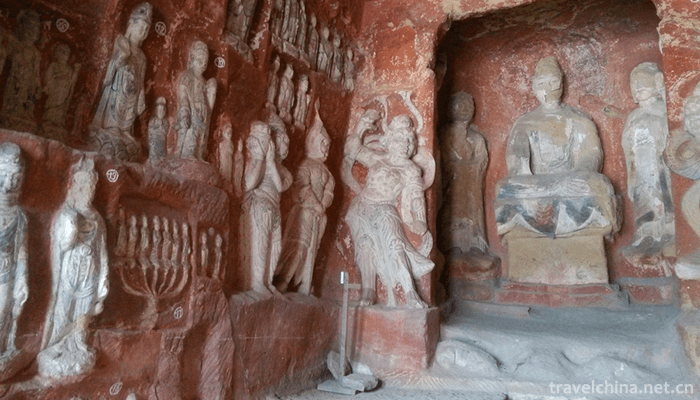
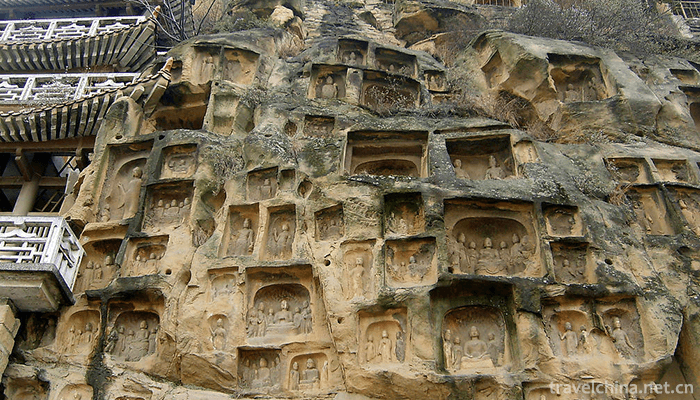
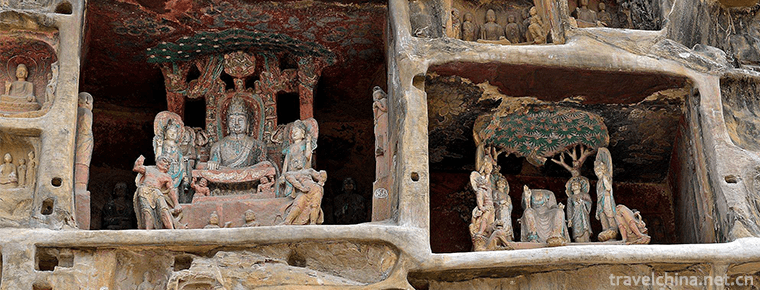
Qianfoya Scenic Spot
-
Mount Emei
Mount Emei is located in Mount Emei, Leshan City, Sichuan Province, China.
Views: 406 Time 2018-10-13 -
Linzhi Basongcuo Scenic Area
Basongtao, also known as Caogao Lake, means "green water" in Tibetan. It is about 18 kilometers long. Its surface area is about 27 square kilometers.
Views: 189 Time 2018-12-12 -
Yellow River First Beach
Views: 185 Time 2018-12-22 -
Xinglong mountain
Xinglong Mountain is the nearest National Natural Forest Reserve to Lanzhou City. It is located five kilometers southwest of Yuzhong County, Lanzhou City, 60 kilometers away from Lanzhou City
Views: 213 Time 2018-12-24 -
Hengshan Scenic Area
Hengshan Scenic Area, located in Nanyue District of Hengyang City, is a holy place of Quanzhen sect, the mainstream Taoist religion, with an elevation of 1300.2 meters. Because the climate conditions
Views: 164 Time 2019-01-16 -
Zhangye National Wetland Park
Zhangye National Wetland Park is located in the northern suburbs of Ganzhou District, Zhangye City, which is closely linked with the urban area. Wetland area of 62,000 mu, the main body is located in
Views: 186 Time 2019-03-16 -
Zhushan National Forest Park
Zhushan National Forest Park is located in Liuhua Po Street Office in the west of Qingdao Development Zone. It is a national forest park approved by the State Forestry Administration in December 2000
Views: 213 Time 2019-03-21 -
Jingshan tea banquet
Jingshan Tea Banquet, born in the Longevity Chan Temple of Jingshan, Jingshan Town, Yuhang District, began in Tang Dynasty and flourished in Song Dynasty. It has a history of more than 1200 years
Views: 117 Time 2019-05-08 -
Salar Folk Songs
There are many kinds of Salar folk songs. In the course of long-term historical development, they have formed colorful and distinctive musical forms and singing styles. Salar folk songs keep the ancie
Views: 166 Time 2019-06-12 -
Cultural corridor of Confucianism Buddhism and Taoism
Emei Mountain Confucian, Buddhist and Taoist cultural corridor inherits and develops Chinese traditional culture through different aspects, and excavates its own value and charm from Emei Mountain's historical culture, and highlights its connotation of "China's first mountain".
Views: 160 Time 2020-10-15
